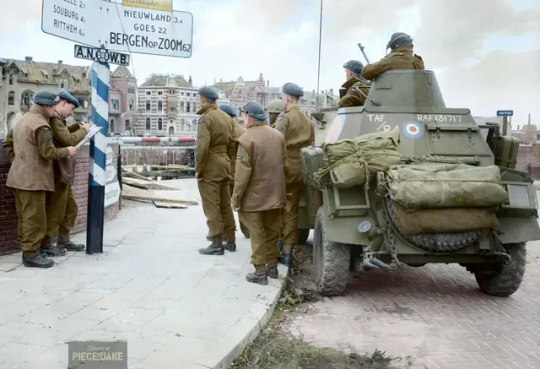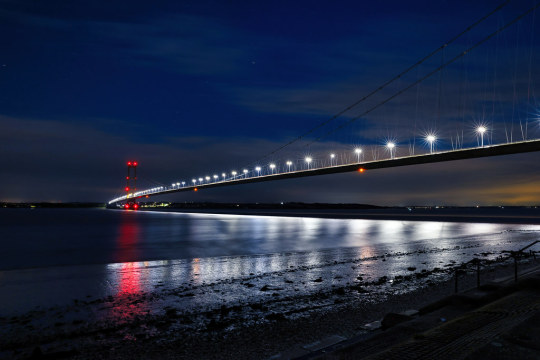#humber bridge
Explore tagged Tumblr posts
Text

Humber Bridge
#humber bridge#bridge#under the bridge#river humber#lincolnshire#black and white#black and white photography#bw photography#photographers on tumblr#bw#monochrome#bnw#bnw photography#photography is my therapy#original work#original content#original photographers#all my own work
20 notes
·
View notes
Text

Fog on the Humber
Dec2624
#photographers on tumblr#original photographers#iphoneography#humber bridge#foggy morning#the humber#heron
9 notes
·
View notes
Text

View of the Humber Bridge from Far Ings Nature Reserve, Lincolnshire, England
14 notes
·
View notes
Text

The Humber Bridge from the Hull to York train. Saturday, 10 February 2024.
8 notes
·
View notes
Text





Humber bridge.
15 notes
·
View notes
Text
It’s time for the annual cry because Leon Kennedy isn’t real
#Ashley coded#my profile pic makes sense for once#looking for pictures of the Humber bridge on my phone but saw some old edits I saved#Leon kennedy#most normal Leon kennedy fan#resident evil
2 notes
·
View notes
Text



Driving over the Humber Bridge. 😃
0 notes
Text

Humber Bridge
#humber bridge#bridge#river#riverside#river humber#humberside#landscape photography#landscapes#bnw landscape#bnw#bnw photography#bw photography#bw#monochrome#photography is my therapy#outdoor photography#outdoors#photographers on tumblr#original work#original content#original photographers#black and white photography#all my own work
18 notes
·
View notes
Text

Humber Mood
Oct3123
#photographers on tumblr#original photographers#iphoneography#jumpneo shoots#humber estuary#humber#humber bridge
17 notes
·
View notes
Text
The anti seasick ship SS Bessemer Saloon Steamship
The SS Bessemer Saloon Steamship- SS Bessemer for short - was an experimental Victorian passenger side wheel steamer designed to counteract seasickness and operated between Dover and Calais. Her inventor was Sir Henry Bessemer.

Bessemer Saloon Steamer, 1874
In 1868, Bessemer, who suffered from severe seasickness, developed the idea of a ship whose passenger cabin - the saloon - was to be suspended on a gimbal and mechanically held horizontally, thus levelling out the swell and sparing the occupants from the ship's movements. Sounded too good to be true, but more on that later. He patented this ingenious idea in December 1869 and after successful trials with a model in which the levelling was carried out by hydraulics controlled by a helmsman observing a spirit level, Bessemer founded a limited company, the Bessemer Saloon Steamboat Company Limited, which was to operate steamships between England and France. Capital of 250,000 pounds was used to finance the construction of a ship, the SS Bessemer, whose chief designer was the naval architect Edward James Reed.

SS Bessemer, by Henry Spernon Tozer 1874
And so she was built by Earle's Shipbuilding in Hull. She bore the shipyard number 197 and was launched on 24 September 1874. As already mentioned, she was a paddle steamer with four buckets (two buckets each on port and starboard, one forward and one aft). She had a length of 106.68 m (350 feet), a width on deck of 12.19 m (40 feet), an outside width over the bucket boxes of 19.81 m (65 feet), a draught of 2.26 m (7 feet 5 inches) and a gross register tonnage of 1974 tonnes. What also characterised her was that she was completely identical fore and aft, she had two bridges and two wheels, which simply made her faster and more manoeuvrable in both directions. Her maximum speed was about 17.4 knots.
The inner saloon was a room 70 feet long (21 metres) and 30 feet wide (9.1 metres), with a ceiling 6.1 metres above the floor, Moroccan-covered seats, partitions and spiral columns of carved oak and gilded panels with hand-painted murals. The press liked to call it the floating clubhouse. However, the swinging saloon was only intended for first class passengers. The second class, on the other hand, did not enjoy this and had to make do with cabins on the sides of the hull.

Harper's Weekly Interior Pages showing the newly building ultra Luxury Bessemer Channel Steam-Ship, 1874
The disaster begins
On 21 October 1874, the Bessemer had her first misfortune. She had just arrived in Hull to be fitted out when she was driven ashore in a storm. She was refloated and found to be undamaged, which was not entirely true, as would later become apparent.
In March 1875, the ship sailed on a private trial voyage from Dover to Calais. During this voyage she is said to have steered well and even had a top speed of 18 knots. Her swinging saloon is also said to have worked excellently. However, things didn't go so smoothly because on arrival in Calais, a paddle wheel was damaged when she crashed into the pier because it didn't react to the rudder at slow speed.
The first and only public voyage took place on 8 May 1875, with the ship sailing with her revolving cabin locked (some observers suggested this was due to the ship's severe instability, but Bessemer attributed this to lack of time to repair the previous damage). The ship was operated by the London, Chatham and Dover Railway. After two attempts to enter the harbour, it again crashed into the Calais pier, this time destroying part of it. Calais billed the company £2800 for the damage.

The Bessemer Saloon-Ship running foul of Calais Pier. Illustrated London News, 1875
Due to the poor performance, investors lost confidence and the company was dissolved in 1876. On 29 December 1876, the Bessemer ran aground on Burcom Sand in the Humber upstream of Grimsby, Lincolnshire, after the removal of the swivelling saloon and other extensive alterations. She was refloated and taken to Hull. The Board of Trade's investigation into the grounding found that the captain was at fault. His certificate was suspended for three months.After removal, the designer Reed had the saloon cabin taken to his home, Hextable House, Swanley, where it was used as a billiard room. When the house was later converted into a women's college, Swanley Horticultural College, the saloon was used as a lecture theatre, but was destroyed by a direct hit when the college was bombed during the Second World War.

The Saloon as a lecutre theatre
The ship was then docked in Dover until it was sold for scrapping in 1879.
The Theory of the Top. Volume IV, by Felix Klein, Arnold Sommerfeld, London, 2010
The Nautical Magazine for 1874
Sir Henry Bessemer, F.R.S.: An Autobiography, 1905
The Gale, The Times. No. 28140. London. 23 October 1874. col E, p. 8.
London, Chatham & Dover Railway Company
177 notes
·
View notes
Photo

Battle of Brunanburh
The Battle of Brunanburh, fought in the autumn of 937 at an unknown location, saw the English king, Aethelstan (r. 924-939), defeat a coalition of invading armies led by Constantine II of Scotland (r. 900-943) and Olaf Guthfrithson of Dublin (r. 934-939).
Battle of Brunanburh
Medieval Warfare Magazine / Karwansaray Publishers (Copyright)
The origins of this conflict lay in the breakdown of Britain's established political order, which, since 918, had been divided into three dominant spheres of influence: the English dynasty of Wessex in the south, the Vikings at York, and the Scots in the north. This dynamic collapsed in 927 when Aethelstan conquered York and subdued the rest of northern Britain, effectively bringing the whole of Britain under his own influence. Seeking to free the north from English control, Constantine found a willing ally in Olaf Guthfrithson, the disinherited Viking heir to York. Together, they mustered a formidable coalition of allies intent on crushing English hegemony and restoring York to Viking control.
While Brunanburh's location has been lost to time, contemporaries saw the battle as a vast and beastly clash. The contemporary Anglo-Saxon Chronicle – a collection of annals recorded at the royal court – bemoaned: "Never was there more slaughter on this island" (Livingston, 43). Meanwhile, it was remembered in the Annals of Ulster – a contemporary Irish chronicle – as a "great, lamentable and horrible battle" (Mac Airt & Mac Niocaill, 385). Yet for Aethelstan, Brunanburh was the crowning achievement of his successful reign, legitimising his rule as the first king of a united English realm, and it would ultimately be remembered as one of the great English victories of the Viking Age.
Aethelstan & the House of Wessex
Aethelstan was born in 894, when his grandfather, Alfred the Great (r. 871-899), was at the zenith of his powers. As ruler of the southern Kingdom of Wessex, Alfred won renown amongst his fellow Englishmen for defeating the Vikings in battle and fortifying his kingdom's defences. He and his son, Edward the Elder (r. 899-924), would expand West Saxon power over the Midland Kingdom of Mercia and Danish-held East Anglia. Thus, when Aethelstan came to the throne in 924, he inherited all of England south of the river Humber.
Much like his grandfather, Aethelstan was pious, scholarly, and a capable warrior, having spent his youth fighting the Vikings in the Midlands. One of his first decisions as king in 926 was to seek peace with his greatest rival, the Viking ruler, Sihtric of York (r. 921-927), which was sealed by Sihtric's marriage to Aethelstan's sister and his baptism. Yet, his conversion was insincere; he swiftly renounced Christianity and died the following year.
Aethelstan
Corpus Christi College, Cambridge (Public Domain)
Sihtric's brother and heir, Guthrith of Dublin (r. 921-934), rushed across the Irish Sea to claim his Yorkshire inheritance. Yet, Aethelstan had made his move first, seizing York and proclaiming himself its new master before Guthrith arrived. With York secured, he now looked further north to extend his hegemony, demanding the submission of several northern kings. Thus, at Eamont Bridge, near Penrith, Cumbria, in the summer of 927, the rulers of Scotland, Strathclyde, and Bamburgh (Northumberland) knelt before the English king, offering him oaths of loyalty and friendship. For good reason, Aethelstan's followers called him "the thunderbolt;" in just three short years, he had brought northern England to heel, making himself the first king of a united England (Foot, 188). Moreover, his supremacy over his Celtic neighbours prompted him to take a new and more ambitious title, "King of all Britain."
Continue reading...
37 notes
·
View notes
Text
Sea fret or fog, I'm above the clouds.
0 notes
Text

An RAF Regiment Humber light reconnaissance car near the Stations Bridge in Middelburg, Holland, November 1944.
27 notes
·
View notes


